Pizza tastes even better the second time if you reheat it like this
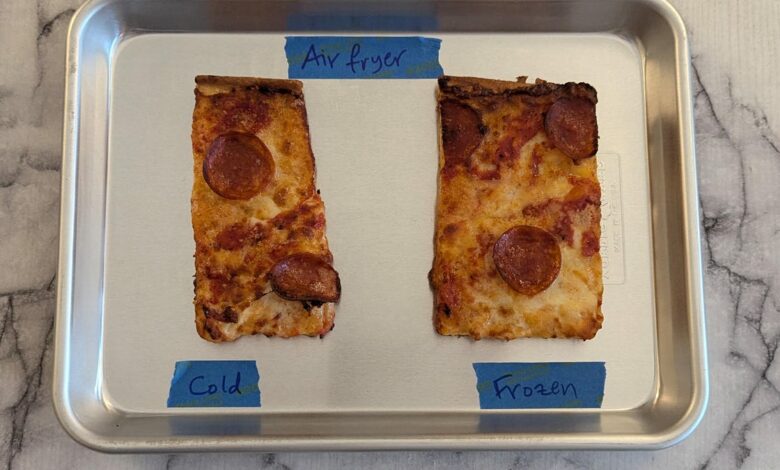

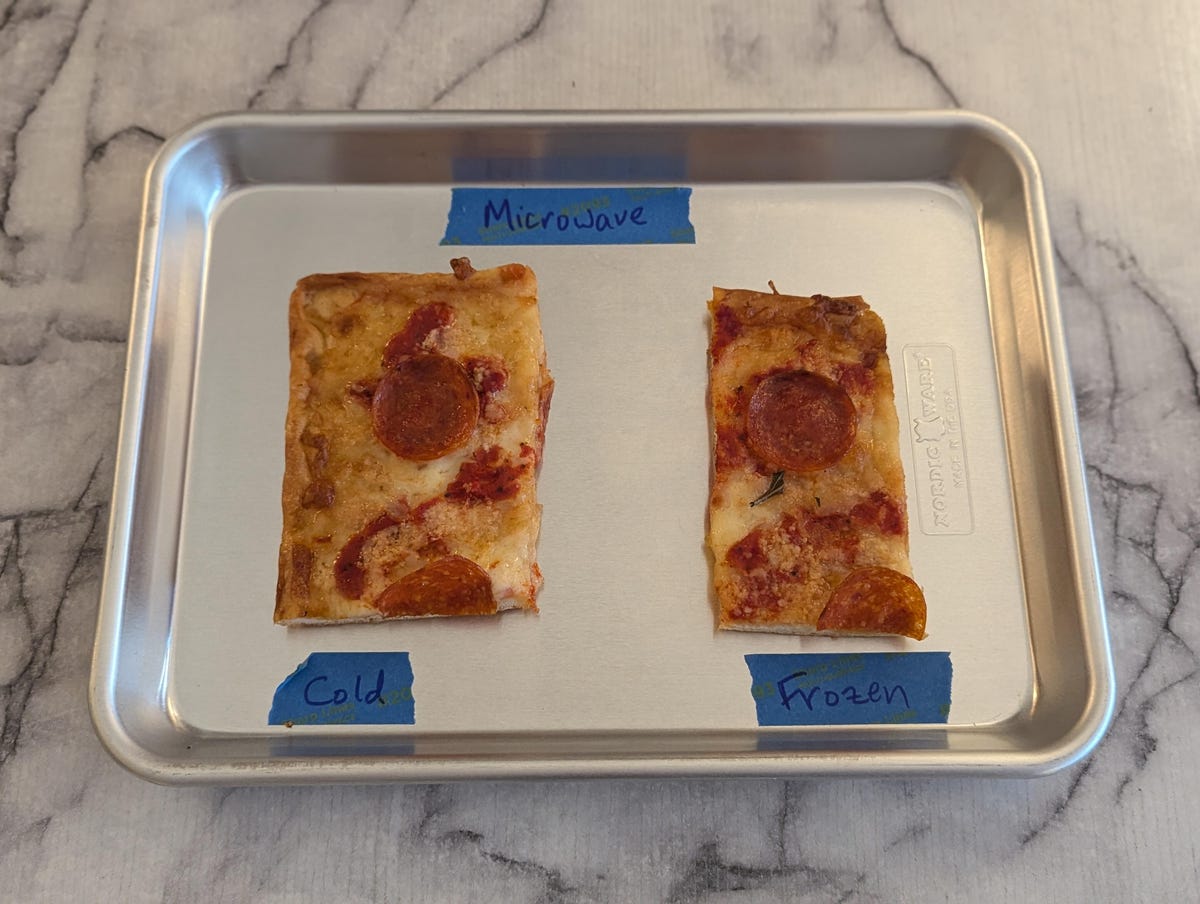
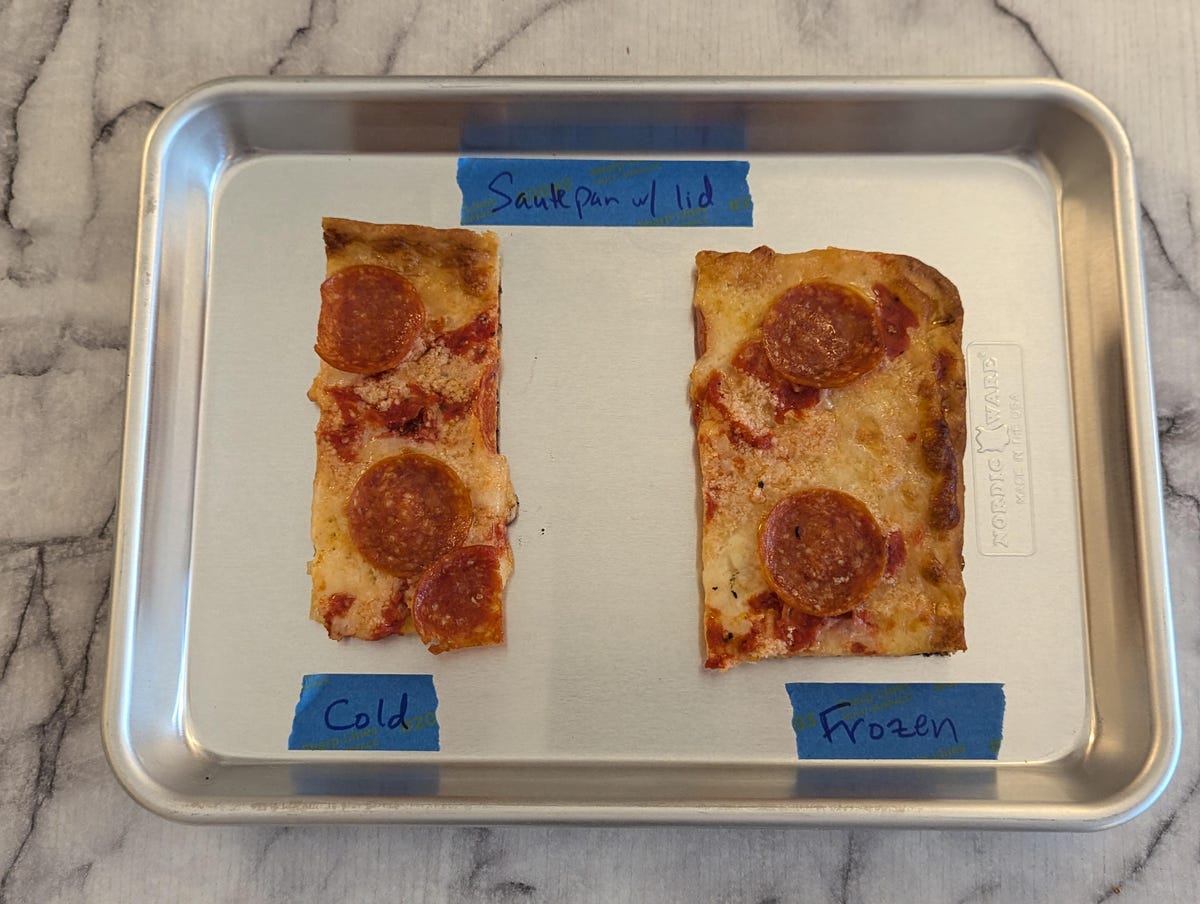
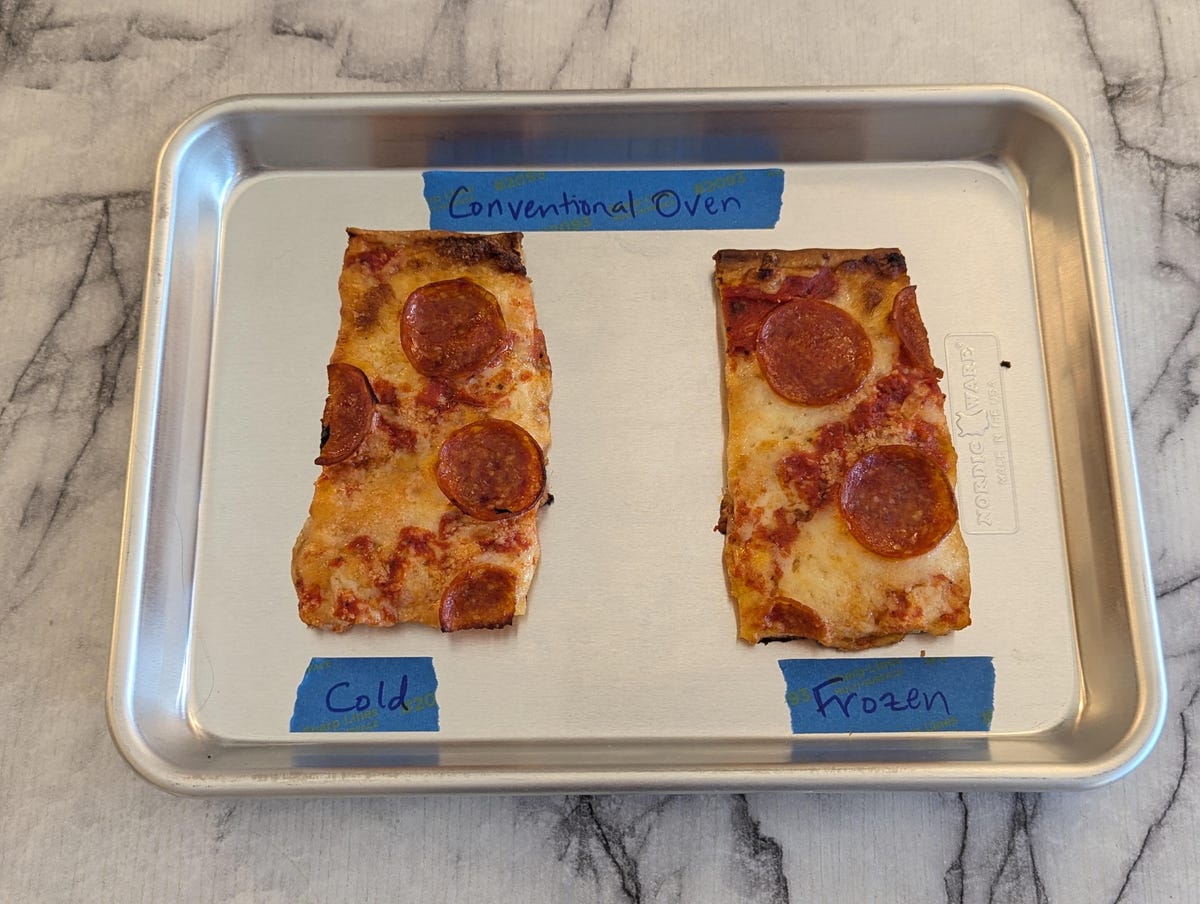
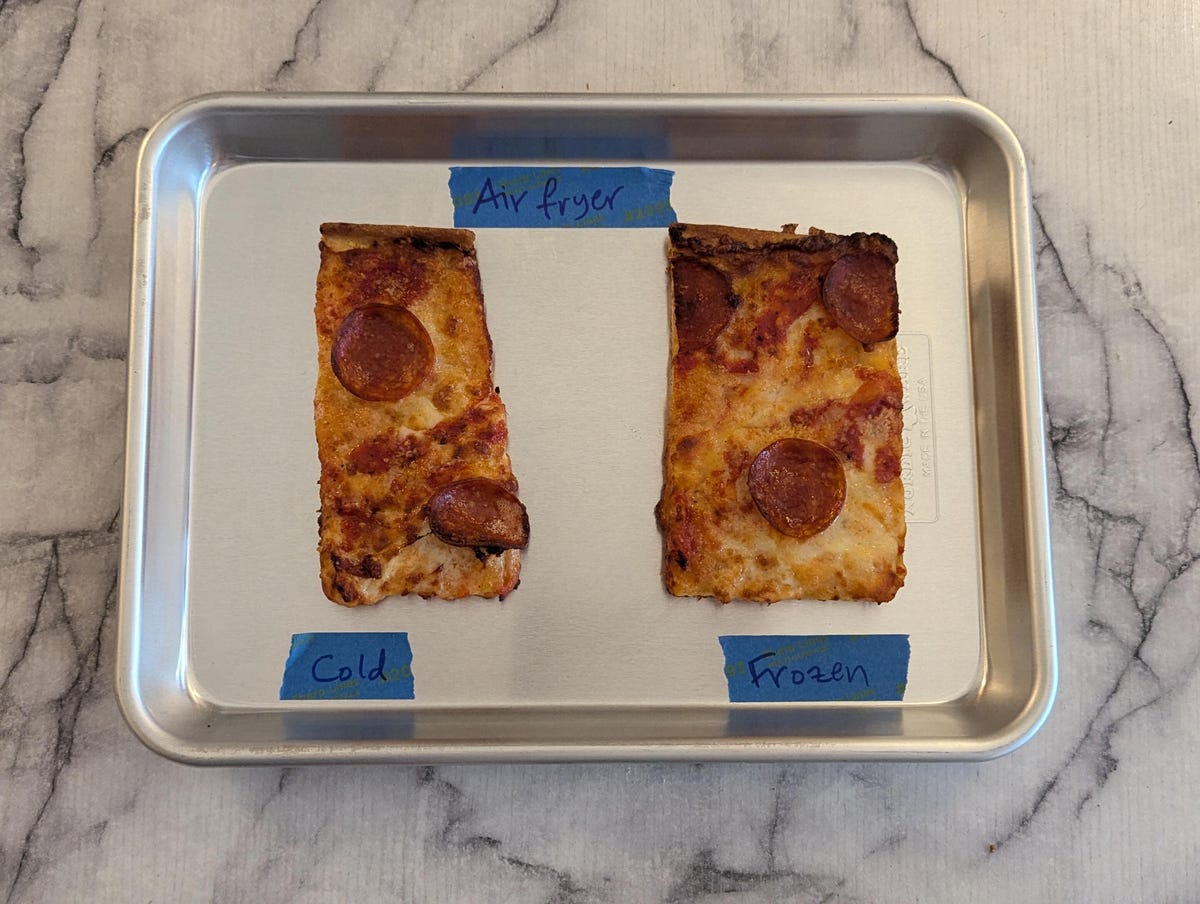
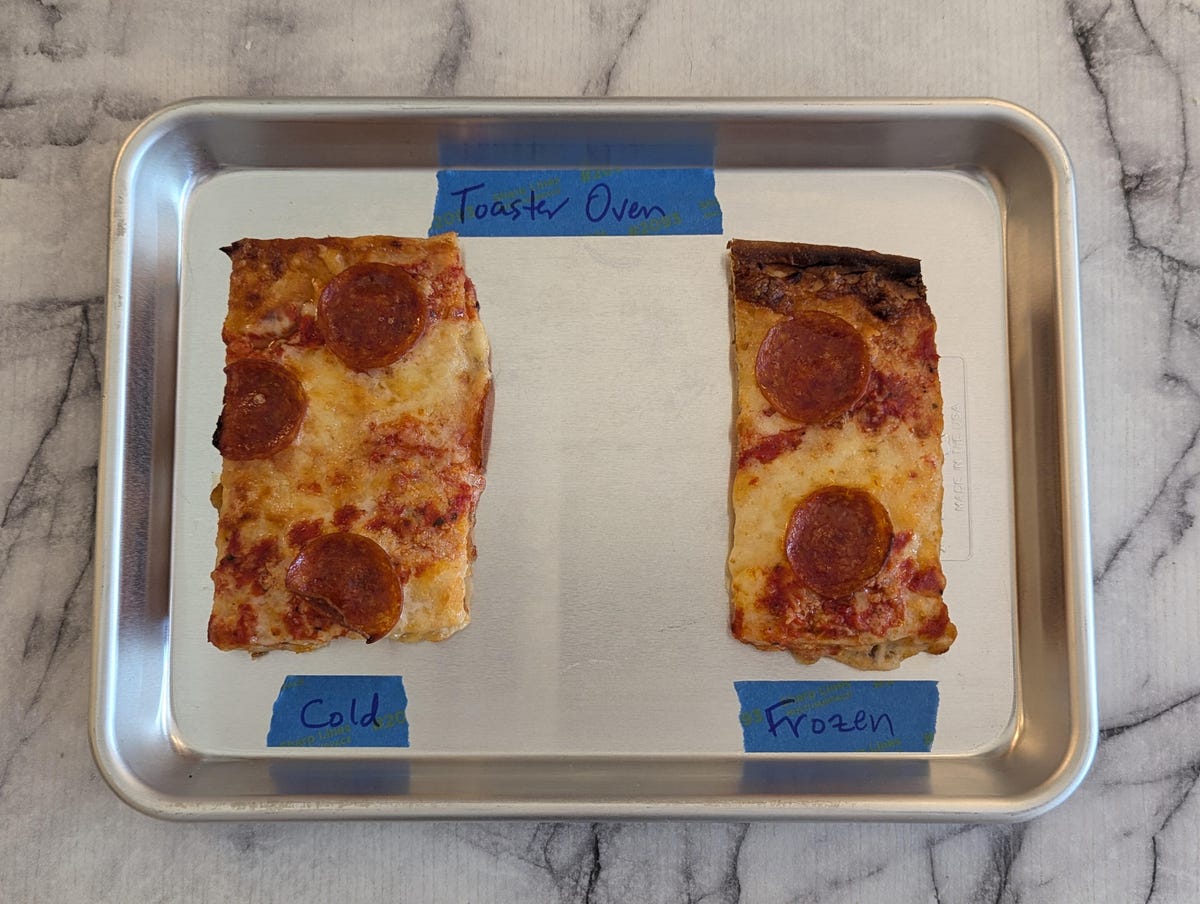
In what might just be the most sacrilegious act of my life, I recently bought a very large pizza for the sole purpose of wrapping it up for the refrigerator And freezerHowever, this despicable act had a noble purpose: to determine once and for all the best way to reheat pizza.

As a family of one, it is not cost-effective to order a whole pizza and often there is leftover. So finding the best way to reheat pizza is both a personal and professional matter.
Meet me, one large pizza, and five different ways to reheat it: microwave, toaster oven, conventional oven, air fryer, and my personal outsider suggestion: a skillet with a lid.
And what do we look for in a reheated pizza slice? Three things, primarily: the integrity of the crust, the texture of the cheese, and the method’s ability to enhance the crispiness of pepperoni, America’s favorite topping, which can be made even better than its original state through the reheating process.
I want to be completely honest: I opted for a square pizza with a medium-thick crust, both for space and to better reflect the consistency of pizzas across the country. I opted for a New York-style pizza, rather than the floppy, thin slices that are typical of New York-style pizzas, where this experiment was conducted.
Below are the five methods for reheating pizza, listed in order from least effective to most effective, and you can use both chilled and frozen pizza.
Microwave
- Advantages: fastest
- Cons: limited space, lowest quality
- Time requirement: 1 minute

The microwave is the fastest, but certainly not the best way to reheat pizza.
Once upon a time the mighty microwave was an all-powerful device that saved us precious time and essentially did the cooking for us. Those days are over. Following some AI advice, I opted to leave the pizza slices uncovered before microwaving them to prevent steaming, but did place them on a plate, because I’m not a monster. (She says, as someone who regularly defrosts bagels directly on the glass.) Working in 30-second intervals, the cheese was hot and sizzling in just one minute. If you really don’t have two to four minutes to spare for better results, I think this is the method for you.
This was the only method where I could actually detect a small difference between the slice that started out cold and the slice that started out frozen, in the same amount of cooking time. Because pizza is relatively thin and even, and the crust of the bread is airy, the frozen slice comes into contact with the cold slice fairly quickly. The crust here wasn’t soggy, exactly, but definitely doughy. If you have a palate sensitive to crusty bread, this is a potential advantage to using the microwave. (My dad would argue with me on this one. When I visit, reheating pizza is automatically a two-appliance process.) If you’re not a fan of cold pizza, the microwave will do just fine, but just know that you can do better.
Sauté pan with lid
- Advantages: direct heat, good quality
- Cons: Uneven cooking, limited space
- Time requirement: 3-4 minutes

The stovetop method was fine, but the cheese and toppings didn’t get as melty and crispy as other methods I’ve tried.
There is one specific circumstance where this method can be useful: a summer holiday home without a toaster, without an air fryer and without air conditioningso that turning on the oven seems daunting. If a microwave is available, it’s a toss-up. You’ll definitely get a crispier crust, but it requires a little more time and almost constant vigilance.
By placing the pizza slices on a dry sauté pan over medium heat, you’re simulating the hot, flat surface of a pizza oven. The crust benefits from this direct surface heat, but you have to be careful not to burn it. The lid is essential, otherwise the cheese and toppings won’t get noticeably warm, but you’re essentially steaming it from above. The cheese won’t melt as well this way, and there’s no hope of crispy pepperoni, but it will get hot and you’ll get a satisfying crust crunch if that’s what you’re after.
Conventional oven
- Advantages: even heat, most spacious, highest quality
- Cons: slowest method
- Time requirement: 10-20 minutes

You can reheat pizza just fine in a conventional oven, but it will take longer than any other method.
Ultimately, the only element that goes against the conventional oven is the time it takes. My oven took about 10 minutes to reach its recommended high temperature of 400 degrees, and then the pizza, at medium thickness, took about 7 minutes to get hot and sizzling. I opted to use a baking sheet here rather than putting the slices directly on the rack, because cleaning a large oven of drippings is a lot more annoying than cleaning a toaster oven.
Quality-wise, though, this was one of the best results. Perhaps a little less caramelization of the cheese than with other methods, but the crust was deeply crispy, helped by the baking sheet, and the pepperoni even got a little charred on the edges, which was a bonus. If you’re going to reheat an entire pizza (how did that even happen?) or even just a few slices at a time, this goes from second runner-up to big winner.
Air fryer
- Advantages: air circulation, even heat, highest quality, no additional dishes
- Cons: the least space, no window for observing the heating process
- Time requirement: 2-3 minutes

The air fryer is fast and the results are just as good as those of other deep fryers.
Depending on the size of your air fryer, there may be a big disadvantage here in terms of how many slices of pizza you can fit in it. If it’s just one (like mine) and your meal needs are more than one, then this method loses out on a technicality, as reheating two slices of pizza separately conflicts with the convenience of reheated pizza.
Assuming your larger air fryer can hold at least two people, I’ll tell you what — the air fryer was surprisingly fast with its hot air circulation. Without a window to monitor its progress, I was surprised to find the pizza bubbling and crispy after only about two and a half minutes. And the result was basically perfect: melted, caramelized cheese, crispy crust, and perfectly charred pepperoni.
Toaster
- Advantages: close by, direct heat, highest quality, no additional dishes
- Cons: limited space
- Time requirement: 5 minutes

Although it takes a little longer than the air fryer, the toaster is still my favorite way to heat up pizza.
This is my favorite way to reheat pizza since I started toaster. Its functionality is versatile and goes way beyond toast. You can use it to actually bake: I’ve made a small pan of cornbread as well as a cookie or two in the toaster oven. However, reheating pizza is its superpower, in my opinion.
The super-dense, direct heating coils heat the pizza evenly and simultaneously from both the top and bottom. The top heating coil acts almost like a grill, caramelizing the cheese and making the pepperoni curl up nicely around the edges. Plus, you can see when the cheese and pepperoni start to sizzle through the open window, taking the guesswork out of when your pizza is done. Plus, putting your pizzas directly on the rack in the toaster oven means one less plate to wash at the end of the meal.




